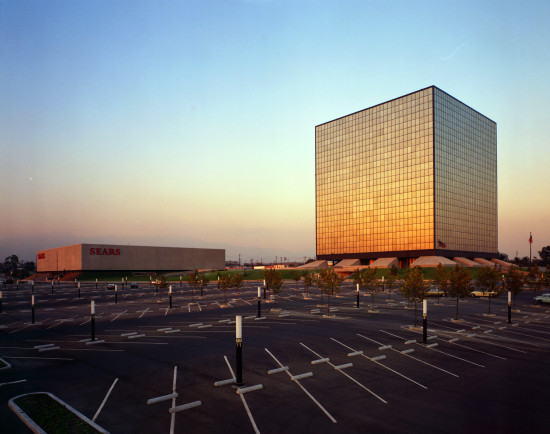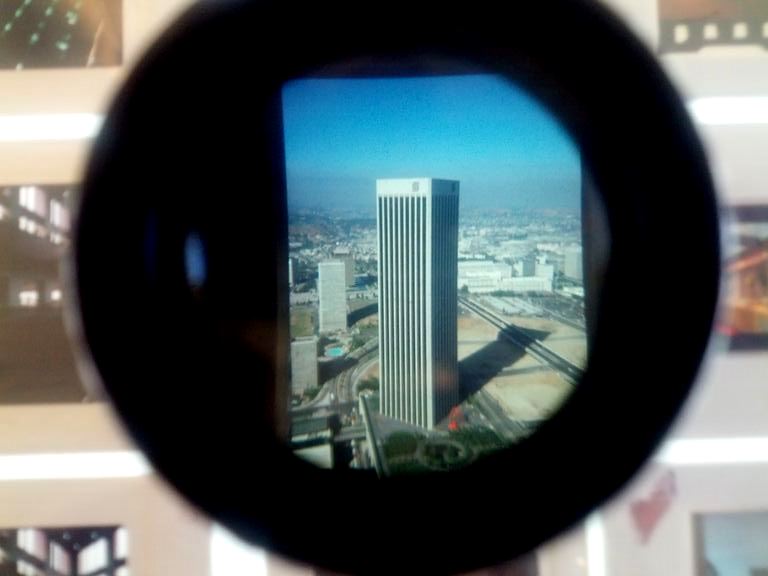
As 1970s and 1980s architecture returns to vogue, a new recognition of those associated with its making and documentation also arises. So it is with Wayne Thom, long the preeminent architectural photographer of the large, Late Modern building by the large firm.
Thom began photographing in the late 1960s and his work in Los Angeles, the Western U.S. and beyond to the Pacific Rim documented changing tastes and approaches toward the architectural subject. Hundreds of images are on view on his website. It’s a distinctive and significant body of work, but one without a home. Presently Thom is looking for an organization or institution to take on his sizeable and meticulously organized archive. As time goes on, Thom’s remarkable work seems increasingly ill-suited for sequestration within any one house, including his own.
Born in Shanghai in 1933, Thom was raised in Hong Kong, and emigrated to Vancouver in 1949 with his family that includes brother Bing Thom who went on to become a highly noted Canadian architect. Arriving in the States in 1964, Wayne graduated from Brooks Institute of Photography in 1968. By the following year he was working with A. Quincy Jones (“A.Q.”) who gave him his big Los Angeles break. Jones, and others whom Jones later introduced on Thom’s behalf, were impressed with approaches that would over time become Wayne Thom hallmarks. These include the use of natural light only, no props whatsoever, and big buildings—particularly the high rise, as his subject.
A breakthrough assignment, Wayne’s prominence further rose with his image of the 1971 CNA Park Place Tower in the Westlake section of Los Angeles. Completed by Langdon & Wilson, CNA Park Place was the first all-over smooth-grid mirror glass skin building—a soon to be corporate vernacular—completed in the Western United States, and likely the Country. Thom’s image of the building overlooking Lafayette Park and the people within it won the First Award of the Pittsburgh Plate Glass (PPG) Architectural Photographers Invitational in 1973.
Among his clients through the 1970s, Thom frequently worked with the A.C. Martin office where he photographed a variety of projects including their various Downtown LA projects, the underrated (and unfortunately renovated) Sears West Coast headquarters, and even an A.C. Martin–designed jet interior. In that decade he also began steady, multi-year work as the primary photographer for William Pereira (“Bill”); San Francisco’s Transamerica Building was among his many Pereira assignments. Among other publications, Thom’s images were featured in Progressive Architecture, Architectural Record, Architectural Forum, and Domus—where he photographed for Gio Ponti, the magazine’s founder. His award-winning Bonaventure Hotel image is the February 1978 Progressive Architecture cover.
Architect Arthur Erickson, whom Thom knew since his much earlier Vancouver years, tapped him to assist in assembling the team of associate architects, landscape architects and designers that ultimately won the 1980 competition to redevelop Bunker Hill sponsored by the City of Los Angeles Community Redevelopment Agency. In a highly publicized coup, they battled against the “All Stars” team, which included Barton Myers, Frank Gehry, Ricardo Legorreta, Charles Moore, Cesar Pelli and others under Maguire Partners Development. Yet says Thom, “We won the battle but lost the war;” aside from a single Erickson building and the hardscape (Two California Plaza was completed by A.C. Martin) the rest of Erickson’s winning scheme was never realized.
Thom continued in full-time practice until 2013, when he curtailed his workload. Living in Rowland Heights, he maintains meticulous records for his thousands of negatives and slides plus hundreds and hundreds of proof books and presentation prints. Now, he’s interested in releasing all of it. In addition to his artifacts, the photographer’s memory is institutional and he seems to have known every single Los Angeles Late Modernist, with insightful if not funny tidbits on most of them. If it all possible, his basic hopes are that archive stay intact and be made available to the public.
